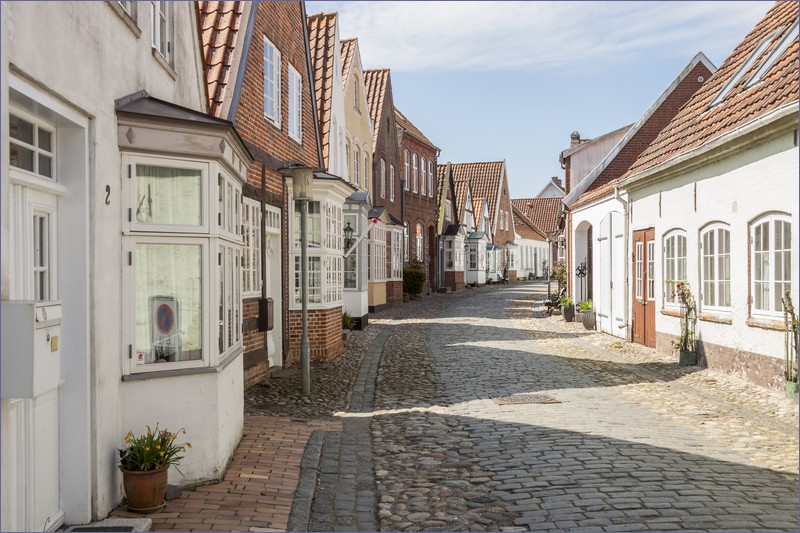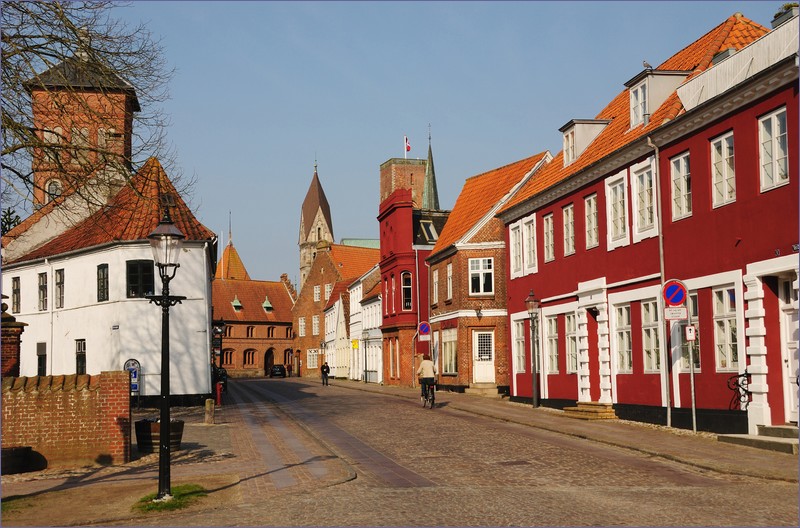There are a few trains between Germany and Denmark. Local trains, Eurocity trains and overnight trains from Stockholm to Berlin pass through Denmark. Train ferries no longer run. Overnight trains from Copenhagen to Amsterdam and Zurich were discontinued many years ago but there is a chance, that Nightjet trains will reach Copenhagen in the future. There is no direct daytime train Berlin – Copenhagen. Czech operator Ceske drahy plans to introduce daytime trains Prague – Copenhagen from December 2025.
Last updated: 26.03.2025
Railway border crossings between Germany and Denmark:
Flensburg DB – Padborg BDK
Süderlügum NEG – Tønder BDK
Ferry trains from Puttgarden to Rødby were ceased on 15 December 2019. Eurocity trains between Copenhagen and Hamburg were rerouted via Kolding. On 1 January 2021 construction of the Fehmarnbelt Fixed Link begun. The road and rail tunnel will cross will connect the Danish island of Lolland with the German island of Fehmarn. The electrified high-speed rail line will be capable of reaching 200 km/h. The 17.9 km long Fehmarnbelt tunnel is expected to be completed in 2029.
There were also ferry trains from Warnemünde DB to Gedser BDK. The passenger trains between Berlin and Copenhagen via this route were ceased in 1995. Currently, former train station in Gedser is a part of the ferry terminal and tracks are used occasionally by heritage railway.
Trains between Germany and Denmark – promotional tickets
Deutsche Bahn offers Super saver fare for low-cost travel between Germany and Denmark. Promotional tickets are called in German Super Sparpreis Europa. You can book tickets up to six months (180 days) before you journey until shortly before a train is due to depart. Super saver fare tickets are excluded from exchange and cancellation. You may only travel on long-distance trains (IC/EC) and on the days indicated on the ticket.
Most flexible are Saver fare promotional tickets – there is a cancellation fee. Deutsche Bahn offers also Group Saver tickets for groups of under six passengers.
Trains between Germany and Denmark – useful websites
Deutsche Bahn – journey planner and online shop
DSB – journey planner and online shop
Train travel in Germany – a comprehensive guide
Train travel in Denmark – a comprehensive guide
Important note: Due to engineering works in Denmark, there are travel disruptions in summer season. Check the DSB website (in Danish).
Eurocity train Hamburg – Copenhagen
Eurocity trains Hamburg – Copenhagen run multiple times each day. Journey time is about 5 hours, trains stop in Schleswig, Kolding and Odense. Currently, trains are comprised of German carriages typical for domestic IC trains – 1st class carriages with compartments, 2nd class carriages with compartments and 2nd class open-plan carriages. Carriages are old but air-conditioned and comfortable.
In December 2024, the new Danish Talgo trainsets will be introduced on this route.
Seat reservation is compulsory.
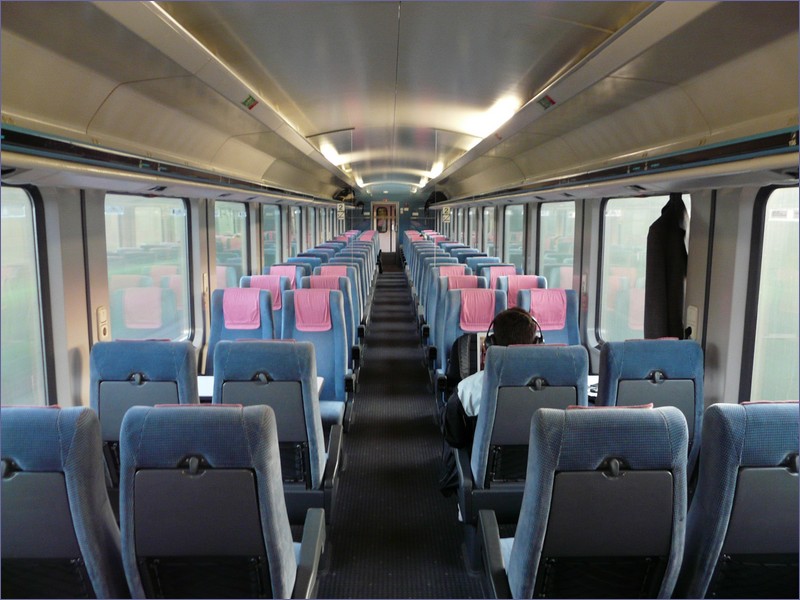
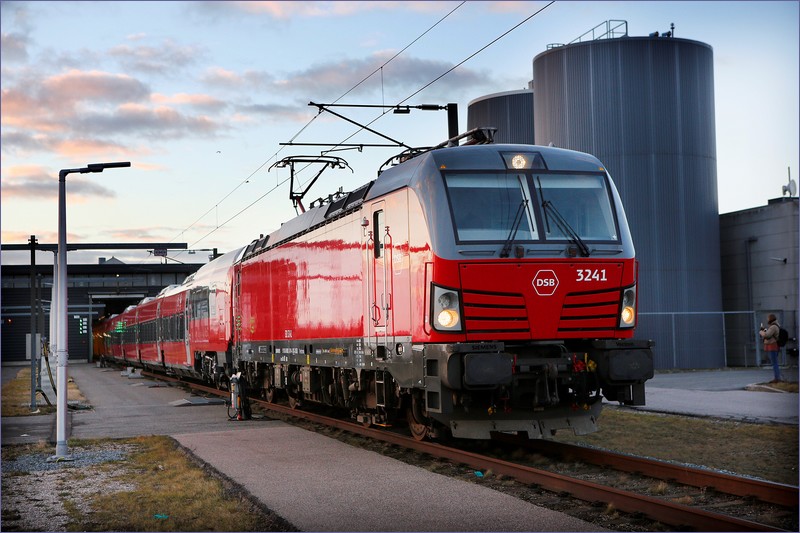
Eurocity train Hamburg – Aarhus
In 2024, the Hamburg – Aarhus train is not running due to modernisation of the tracks on the Danish section of the route. Passengers travelling between Aarhus and Germany will have to change trains at Kolding. There is a convenient transfer between Hamburg – Copenhagen trains and Kolding – Aarhus trains at Kolding station.
The passenger service between Hamburg and Aarhus will be reinstate in December 2024.
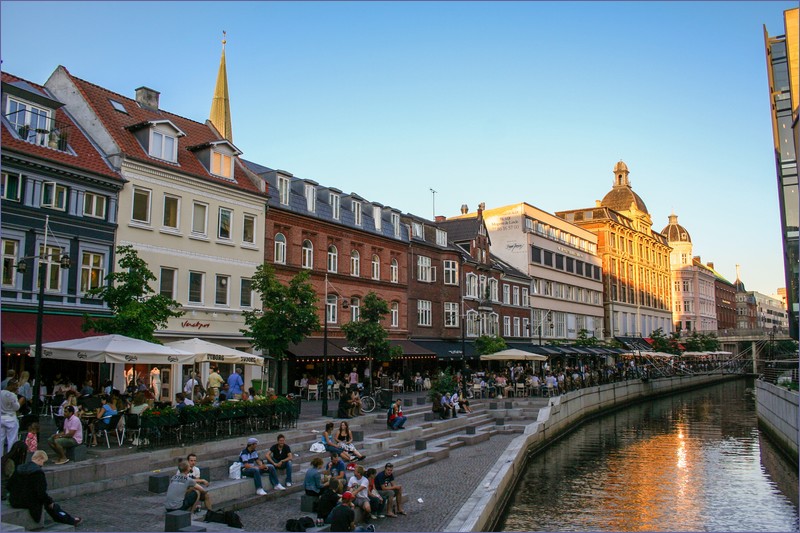
Trains from Berlin to Stockholm
Direct trains from Berlin to Stockholm pass through Denmark and provide direct connection between Berlin and Copenhagen. Currently, two operators launch overnight trains from Berlin to Stockholm with stops in Denmark
Train operated by SJ runs daily. It is subsidised, so ticket prices are affordable, although a supplement for bed in the sleeping carriage is very expensive. Train is comprised of seating carriages with six-people compartments, couchette cars (6-berth compartments), 2nd class sleeping carriages with 2-bed compartments and 1st class sleeping carriages with 2-bed compartments and private shower. I recommend sleeping carriages – expensive but very comfortable.
Train operated by Snalltaget runs seasonally. It is not subsidized. Train is comprised of couchette cars with 6-berth compartments. You can share a compartment with other passengers or book a private compartment for you or your company of up to six people. Train consists also a restaurant car.
SJ – journey planner and online shop
Snalltaget – official website and online shop
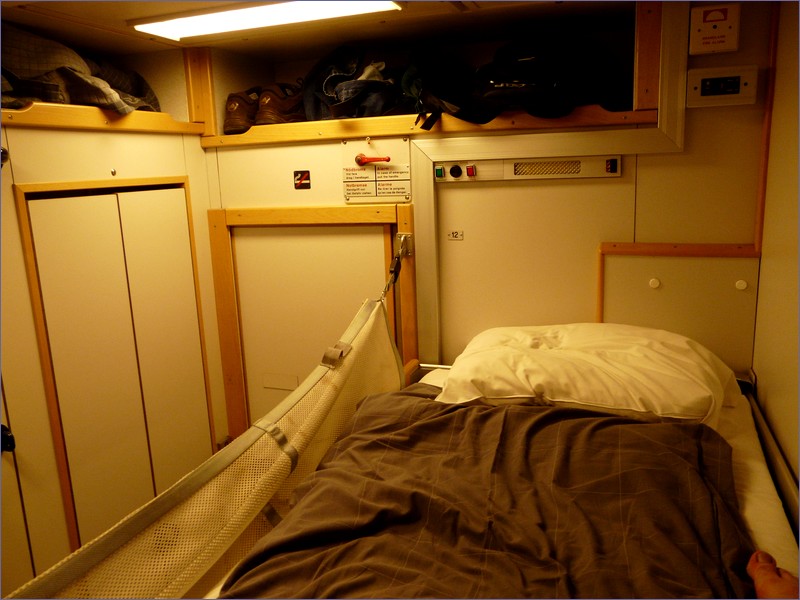
Cross-border trains between Germany and Denmark
There is only one cross-border train between Germany and Denmark.
Niebüll – Tønder train is operated by Norddeutsche Eisenbahngesellschaft Niebüll GmbH (NEG). It is a short cross-border route. Trains cover the route in 20 minutes. Ticket prices are moderate. Tønder is a beautiful town but you must visit Danish town of Ribe – the oldest town in the country, dating back to the early 8th century. It is renowned for its well-preserved medieval architecture, charming cobblestone streets, and significant historical sites.
Passenger trains from Tønder to Ribe are operated by GoCollective (formerly Arriva Tog) and tickets are expensive. Journey time from Tønder to Ribe is about 35 minutes, so you can organize one-day train trip from Sylt or Husum to two beautiful towns in Denmark.
Norddeutsche Eisenbahngesellschaft Niebüll – official website
GoCollective – official website
There are no cross-border trains between Flensburg and Padborg.
